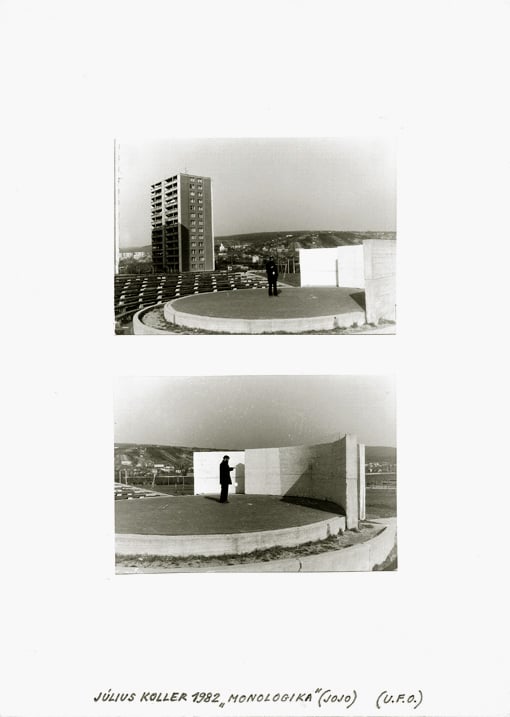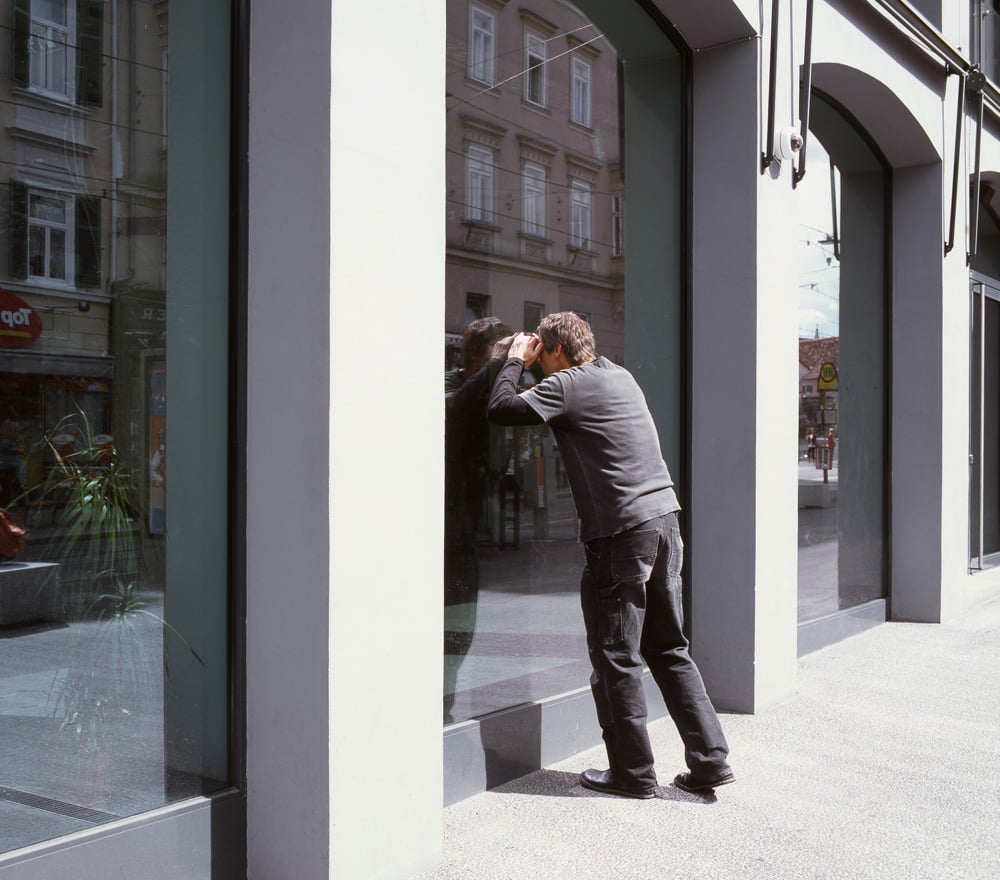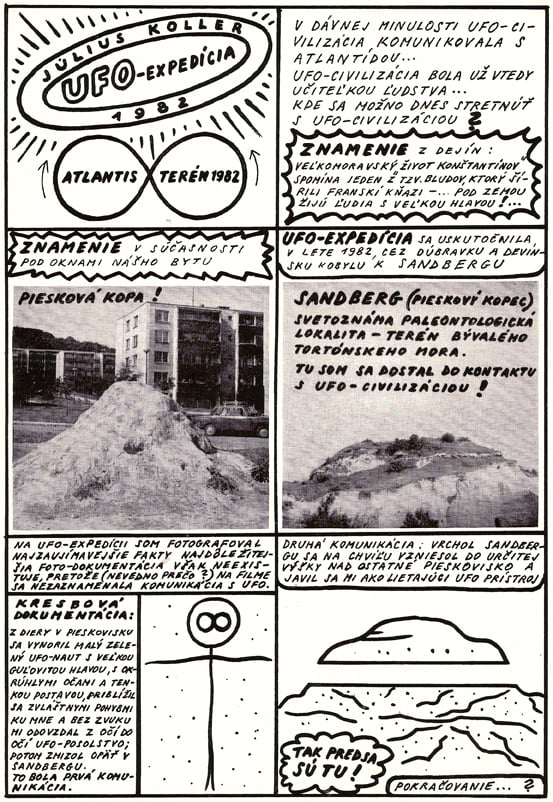Monologika - Yoyo 1.,2. (U.F.O.)
1982 - Photography (Photography)
8,1 x 11,6 x 2 cm
Julius Koller
The photograph Monologic – Yo-Yo 1, 2 (U. F. O.), (1982), shows Koller playing with a big white Yo-Yo in a drab concrete building among a group of tower blocks. For him, games like ping-pong or the yo-yo representsed the possibility of a more playful society in the face of socialist standardization. Koller’s semiological manipulations of landscape and topography, of places and (his own) faces, investigate the possibilities of shifting meaning by the simplest alterations. In deadpan-humorist fashion, most poignantly displayed in a series of photo-portraits that cover a period of more than four decades, he systematically explores the relationship between art and alienation, or the idea of art as alienation. “U. F. O.-naut J. K.” becomes the artist’s altered ego, an extraterrestrial maker and distributor of universal signs: question marks, Ping-Pong balls, or wave lines, a more recent signature symbol, formed by tennis balls in a swimming pool in 1992 or drawn on the floor in the “antiperformance” Nova vaznost’, 1991.” (Tom Holert, Artforum, October, 2004).
In its stringency, obsession and peculiarity, the oeuvre of Julius Koller is one of the most idiosyncratic and consistent in European art since the 1960s. Yet Koller is not only a seminal figure in the history of the neo- and post-avant-garde; his work has long been a critical inspiration for artists and intellectuals. In the most recent past, Koller’s concepts of the Anti-Happening, the Anti-Picture, the Universal-cultural Futurological Operation (U.F.O.), his actions, objects, texts and the enormous referential archive he built up, have attracted growing interest on the part of a broader art public. From around 1960, in response to the modernist mainstream in Slovak art, Julius Koller began to develop his aesthetic position of the “antihappening.” His strategy consists in using real objects and everyday life as the predefined program for an aesthetic operation: from 1965, in texts rubberstamped on paper that refer to the context of the “anti-happening,” and then in 1967/1968 in pictures for which Koller used white latex paint instead of oils and which saw the first appearance of the question mark—the symbol of Koller’s brands of naming, or “making known,” that was later to undergo many mutations in various media and states of aggregation. The “invitation cards for an idea”—as Koller called the text works relating to the “anti-happenings”—and the palimpsests and serial arrangements of the “anti-pictures” set themselves apart from the academicism of Modernism in more than just formal terms. Koller foregoes every form of technical mastery. The “anti-pictures” are amateurish in style, ensuring that they fulfill their task, defined by Koller as “engaging rather than arranging.” Julius Koller was born in 1939 in Piestany, Slovakia. He died in 2007 in Bratislava.
Colors:
Related works featuring themes of: » Performance Art, » Slovakian
» see more

© » KADIST
Roman Ondak
2003As the caption purposely admits, these drawings were made by friends of Ondák’s at home in Slovakia asked to interpret places he has journeyed to...
© » KADIST
Rabih Mroué
2012The Pixelated Revolution is a lecture-performance by artist Rabih Mroué about the use of mobile phones during the Syrian revolution...

© » KADIST
Trisha Donnelly
2007Untitled is a black-and-white photograph of a wave just before it breaks as seen from the distance of an overlook...
Other related works, blended automatically
» see more

© » KADIST
Roman Ondak
2003As the caption purposely admits, these drawings were made by friends of Ondák’s at home in Slovakia asked to interpret places he has journeyed to...
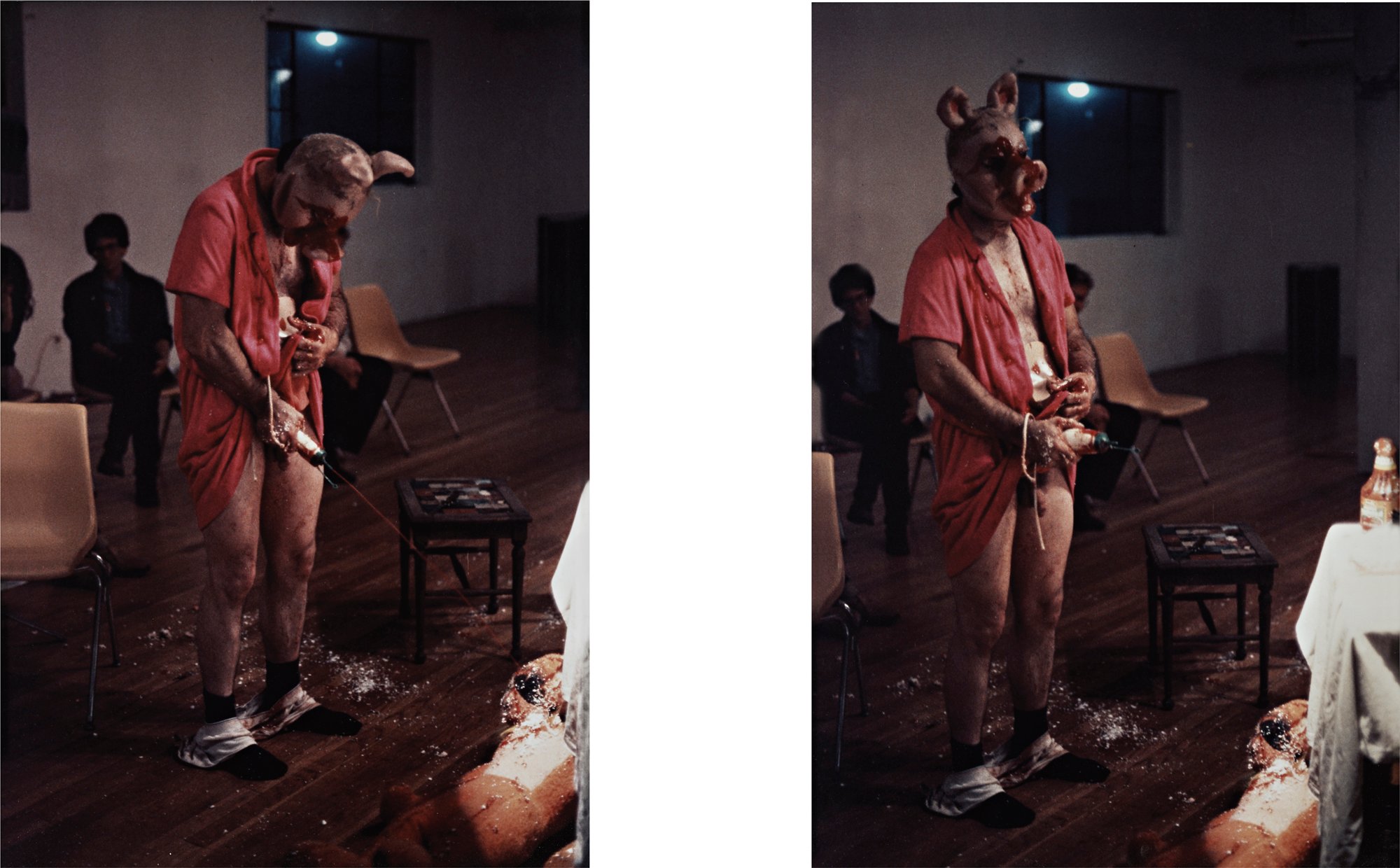
© » KADIST
Paul McCarthy
1983McCarthy’s Mother Pig performance at Shushi Gallery in 1983 was the first time he used a set, a practice which came to characterize his later works...
Related works sharing similar palette
» see more
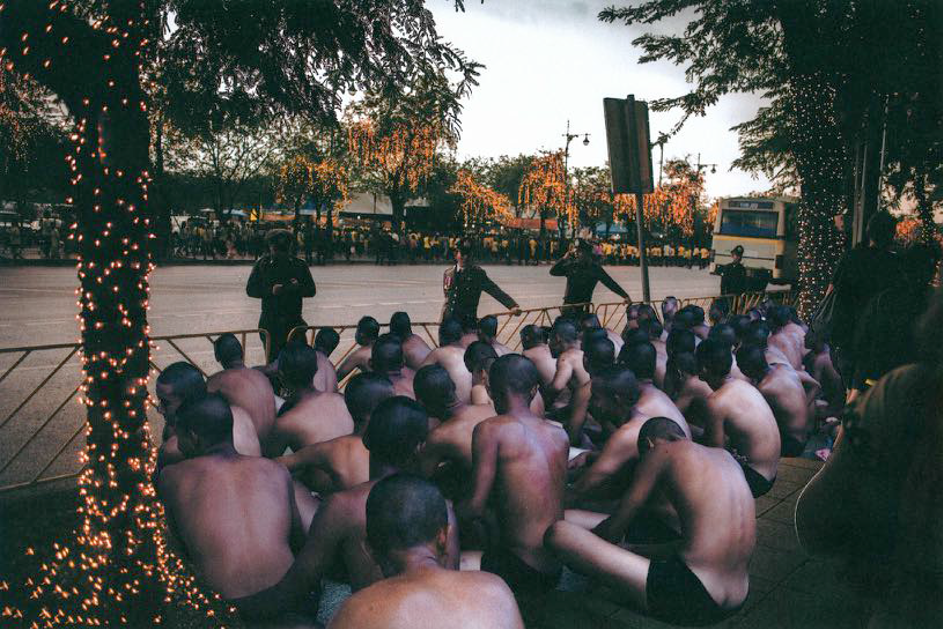
© » KADIST
Harit Srikhao
Young men are often found together in uniform, already influenced by ideology and bodily and style stereotypes...

© » KADIST
Abraham Oghobase
2018This series of photographs is inspired by the artist’s travels to Jos, Nigeria...
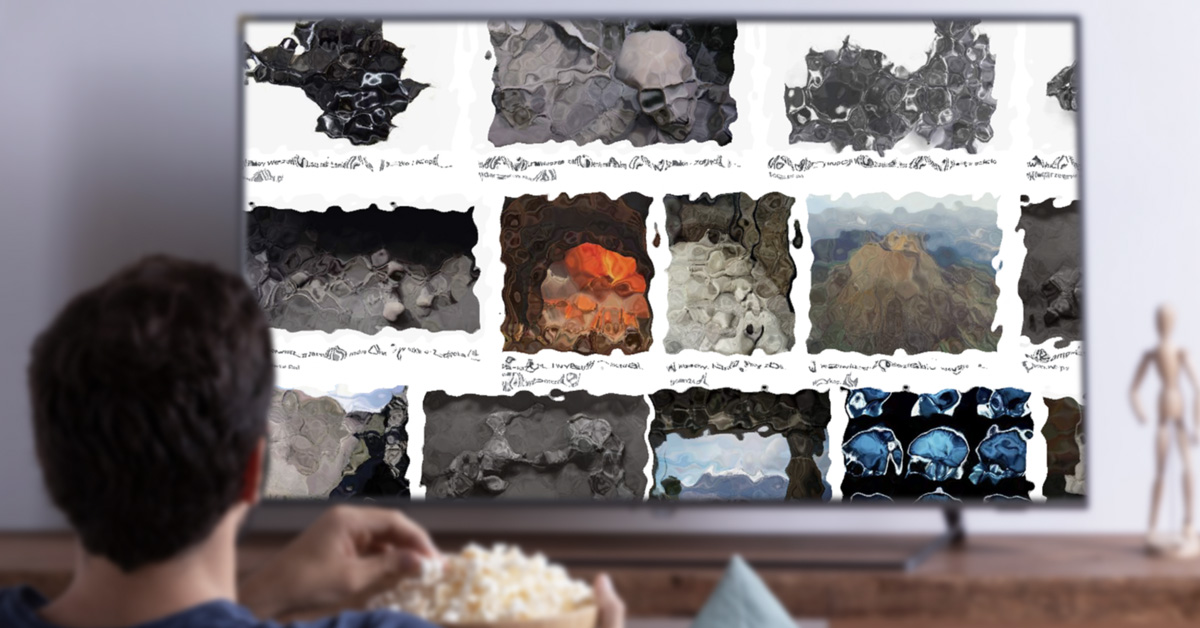
© » GALERIA FOKSAL
Dominika Olszowy, Vesuvius eruption victim’s brain turned to glass - Galeria Foksal Polski English GALERIA FOKSAL #Las Rzeczy Exhibitions Artists About gallery Contact Dominika Olszowy Dominika Olszowy, Vesuvius eruption victim’s brain turned to glass September 23, 2022 Exhibition opening: September 23rd from 6 pm Exhibition duration: September 23rd – November 2nd, 2022...

© » THEARTNEWSPER
Roman funerary bed found in central London Art market Museums & heritage Exhibitions Books Podcasts Columns Technology Adventures with Van Gogh Search Search Archaeology news Roman funerary bed found in central London Archaeologists are "blown away" by the levels of preservation of the finds at Holborn Viaduct, which also include five oak coffins, a decorated lamp, a glass vial, and jet and amber beads Maev Kennedy 5 February 2024 Share The funerary bed being excavated and a reconstruction © MOLA A Roman oak bed, on which a dead person may have been carried to a grave now lying six metres below the surface of modern London, has been excavated along with a wealth of startlingly well preserved finds spanning many centuries, by archaeologists working in advance of a huge office development at Holborn Viaduct...
Other works by: » Julius Koller
» see more

© » KADIST
Julius Koller
Anti-Happening refers to Koller’s 1965 manifesto, ‘Anti-Happening (System of Subjective Objectivity)’...
Related artist(s) to: Julius Koller » Rirkrit Tiravanija, » Mladen Stilinović, » Anton Vidokle, » Douglas Gordon, » Roman Ondák, » Deimantas Narkevičius, » Hans Ulrich Obrist, » Jiří Kovanda, » Mona Hatoum, » Rasha Salti
» see more

© » KADIST
Anton Vidokle
2020Shot in Oliveto Lucano, a village in the south of Italy, AUTOTROFIA (meaning self-eating) by artist Anton Vidokle is a cinéma vérité style film that slides fictive characters into real situations, and vice-versa, to draw a prolonged meditation on the cycle of life, seasonal renewal, and ecological awareness...
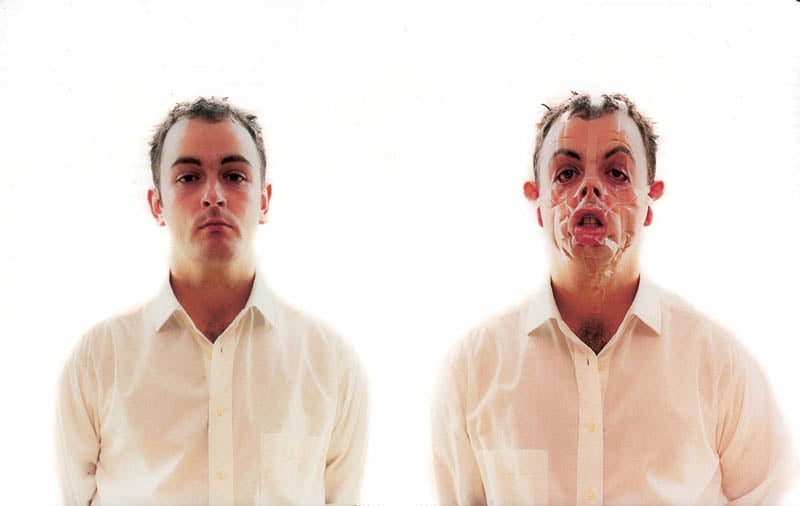
© » KADIST
Douglas Gordon
1996In Monster (1996-97), the artist’s face becomes grotesque through the application of strips of transparent adhesive tape, typical of Gordon’s performance-based films that often depict his own body in action...

© » KADIST
Jiri Kovanda
1979This ephemeral installation by Jirí Kovanda, documented in the same way as his performances with a photograph and a text, belongs to a body of works that took place in his apartment/studio...
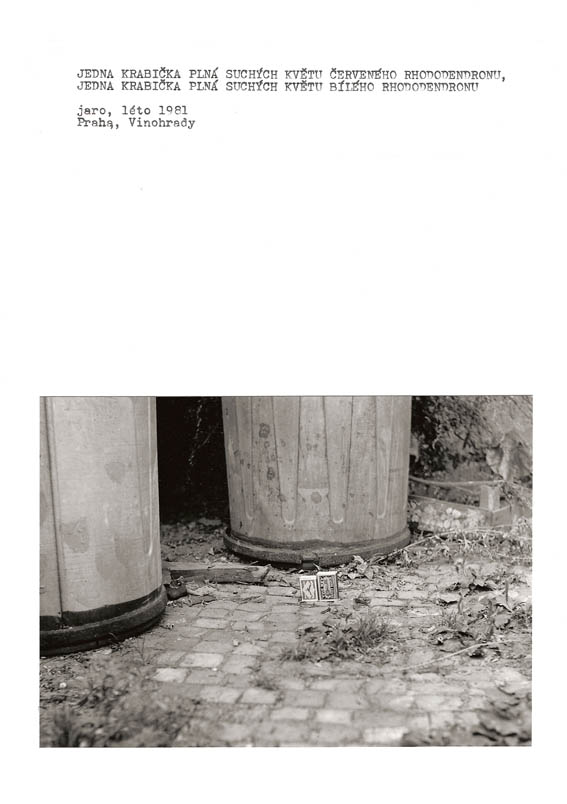
© » KADIST
Jiri Kovanda
1980Kovanda’s street interventions are always documented according to the same format as the actions: a piece of A4 paper, a typewritten text giving a precise location and date, and a photograph...
Related works found in the same semantic group
» see more

© » KQED
This Bay Area Filipino Streetwear Is a Favorite Among Rappers and Rebels | KQED Skip to Nav Skip to Main Skip to Footer Arts & Culture This Bay Area Filipino Streetwear Is a Favorite Among Rappers and Rebels Dario McCarty Dec 13 Save Article Save Article Failed to save article Please try again Facebook Share-FB Twitter Share-Twitter Email Share-Email Copy Link Copy Link Jaden Yo-Eco (left) and Humbert Lee pose for a portrait at Lee’s home in Daly City on Nov...

© » NYTIMES LENS
Lisl Steiner, Photographer Who Glimpsed Luminaries Up Close, Dies at 95 - The New York Times Arts | Lisl Steiner, Photographer Who Glimpsed Luminaries Up Close, Dies at 95 https://www.nytimes.com/2023/06/18/arts/lisl-steiner-dead.html Give this article Share full article 5 Advertisement SKIP ADVERTISEMENT Lisl Steiner, a flamboyant photojournalist who was celebrated for her intimate, emotive images of history-tilting figures like Fidel Castro, John F...
